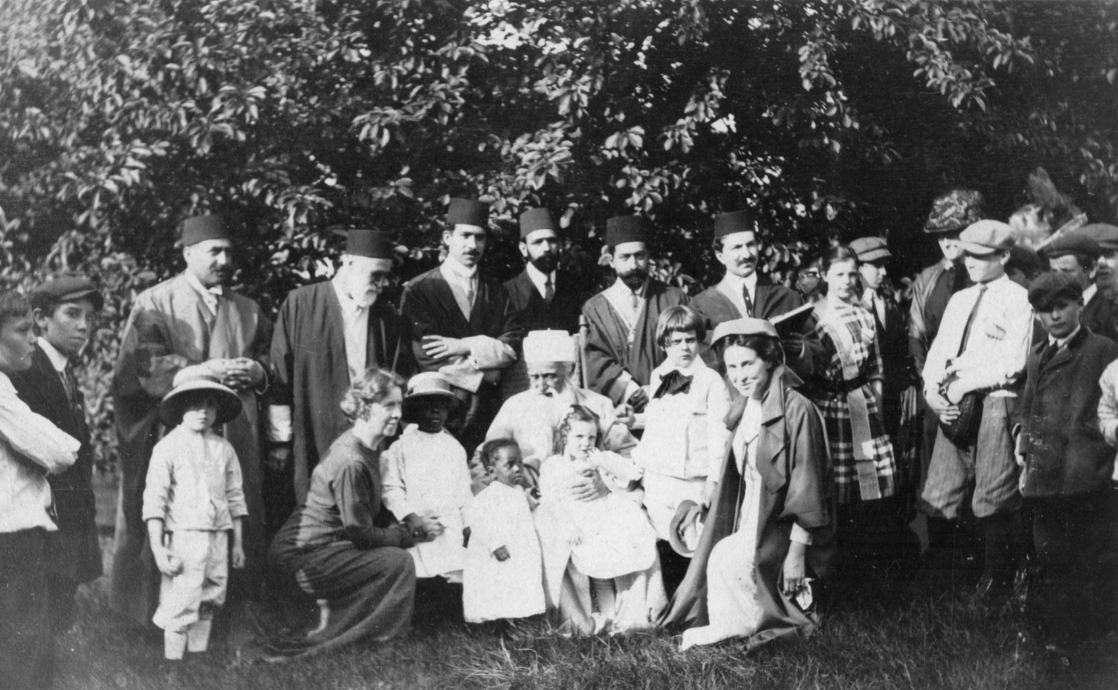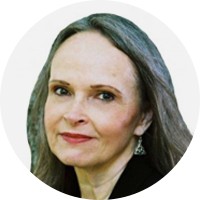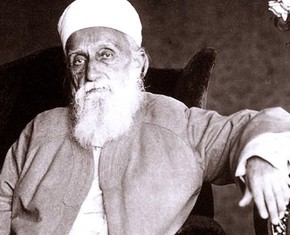The views expressed in our content reflect individual perspectives and do not represent the authoritative views of the Baha'i Faith.
Race – a social construct, not a biological or genetic one – is based solely on visible differences in skin color, a purely evolutionary adaptation to environment. We know this because, well, Science.
We also know it because the Baha’i teachings pointed it out more than a century ago, as in this statement from a talk Abdu’l-Baha gave in Paris in 1911: “The diversity in the human family should be the cause of love and harmony, as it is in music where many different notes blend together in the making of a perfect chord.”
In the late 20th century, the Human Genome Project proved that humanity is literally one family, explaining that it’s possible for “White” and “Black” individuals who live next door to each other in the U.S., say, to be more closely related genetically than two Black individuals living in Zimbabwe. Yet, one of the hallmarks of the American experience is the stubbornness of race prejudice and its big brother, racism.
RELATED: Champions of Unity: Abdu’l-Baha and Rabbi J. Leonard Levy
Race prejudice becomes racism with the addition of a single component — power. While individuals may harbor prejudice based on skin color, racism occurs when one group controls the levers of power — government, the political apparatus, wealth and property, educational opportunities, law enforcement, the courts.
Racism is prejudice upheld by law and common culture.
When Abdu’l-Baha arrived in America in 1912, racism was the norm, even in Northern states. Yes, Black people were theoretically equal before the law and had possessed the right to vote since 1870, but in reality, those rights were controlled and denied in a variety of ways, such as reading tests, poll taxes, threats of violence – and actual violence.
This state of the nation represented a step on the long spiral stair between slavery and full equality, which is not universal even now. On the ground floor of the nation’s founding was slavery, so entrenched in the economy that it precipitated a civil war. In 1865, we took a step upward and abolished slavery through the 13th Amendment to our Constitution, but the amendment allowed “involuntary servitude” – slavery – as punishment for crime. So, between 1870 and 1964 states created ordinances that defined some behaviors as illegal for Black people. It became criminal for Blacks to take up certain professions, to marry outside their race, or even attend a White school. These so-called Jim Crow Laws enforced racial segregation through the legal doctrine of “separate but equal,” but since people of color controlled few resources, this equality proved imaginary.
The legislative battles over these issues were accompanied by a long history of exceptionally lopsided “race wars.” In 1910, the year Abdu’l-Baha traveled to Egypt, freed from exile in Palestine, one such war erupted in Slocum, Texas. Resulting from umbrage over two unrelated events (a White farmer’s claim he was owed money by a Black businessman, and a Black man’s appointment to recruit a road construction crew), the Slocum Massacre began as a pre-emptive strike against a rumored Black uprising. The false rumors — started by one man — so terrified the White populace that they took refuge in churches and other public buildings against a Black mob that never materialized. Nonetheless, a White mob went door-to-door, flushed their Black neighbors into the nearby woods, and killed them. The number of dead was never accurately determined.
This was the America Abdu’l-Baha encountered in 1912, when he arrived to spread the teachings of Baha’u’llah’s Faith, with its revolutionary focus on the oneness of humanity. Abdu’l-Baha boldly rejected race as an essential marker of human identity, and taught that diversity was a source of strength and beauty. Among his many words about this foundational concept were these:
Baha’u‘llah also taught that prejudices — whether religious, racial, patriotic or political — are destructive to the foundations of human development. … Until they are dispelled the advancement of the world of humanity is not possible …
Abdu’l-Baha did not, however, merely give talks. He walked the walk, as they say, demonstrating Baha’u’llah’s words to his wealthy White American hosts by venturing into impoverished neighborhoods and bringing to their homes the poorest and most marginalized citizens.
During his European sojourn the previous year, he shocked Parisian society. At a Paris hotel, the concierge informed Abdu’l-Baha that the Black friend he’d invited to visit him there had been turned away because his presence was not consistent with the standards of the hotel. Abdu’l-Baha told him, “I did not come to Paris to conform to the customs of Paris, but to establish the standard of Baha’u’llah.” He then requested that his Black friend be found and brought to the hotel – and he was.
In America, Abdu’l-Baha continued to emphasize Baha’u’llah’s teachings on race. During his stay with the Kinney family in New York, he entertained a large group of poor children he had encountered on his visit to the Bowery. Among them was a single Black boy of ten or eleven. Abdu’l-Baha honored him before his White cohort, referring to him as a “black rose” and comparing the color of his skin to a coveted and expensive dark chocolate.
RELATED: Louis Gregory: Tireless Worker for Racial Amity
Among Abdu’l-Baha’s close American friends was a Black attorney named Louis Gregory. Born just after the Emancipation Proclamation, Louis had earned a law degree from Howard University and was admitted to the bar in 1902 in Washington, DC. He became a Baha’i in 1909. Abdu’l-Baha once likened him to the pupil of the eye – both were black; both were the focus of light. It was through Louis Gregory’s invitation that Abdu’l-Baha gave a talk at Howard University. He began this talk by saying:
Today I am most happy, for I see here a gathering of the servants of God. I see white and black sitting together. There are no whites and blacks before God. … If the heart is pure, white or black or any color makes no difference. God does not look at colors; He looks at the hearts.
Later, at a swank reception, Abdu’l-Baha put proof to his words. From the seat of honor, he looked down the table and realized that someone was missing, someone he had specifically invited to attend. He stood, looked around at all the White faces and asked, “Where is Mr. Gregory? Bring Mr. Gregory!”
Louis was found and seated at Abdu’l-Baha‘s right hand, making him co-guest of honor. Abdu’l-Baha then proceeded to speak to the assemblage about the oneness of humanity.
Not long after this, Abdu’l-Baha played an instrumental role in a landmark event — Louis Gregory’s marriage to Louisa Mathew, a White woman. Louis and Louisa had met and become friends a year earlier in Ramleh, Egypt where they had traveled separately to meet with Abdu’l-Baha. While visiting Chicago, Abdu’l-Baha had spoken to each of them, telling Louisa that if she loved Louis, the two should be wed. To Louis, he said simply, “It would give me much pleasure if you and Miss Mathew were to marry.”
Louis was stunned by this radical idea — to marry across racial boundaries in a country in which over half the states still had anti-miscegenation laws on the books! He recounted that it required a two-hour walk through the streets of Chicago to regain his composure. In September of 1912, Louis and Louisa were married in New York in a private ceremony officiated by a sympathetic Episcopalian minister.
In another speech he gave during his North American sojourn in 1912, Abdu’l-Baha said:
When the racial elements of the American nation unite in actual fellowship and accord, the lights of the oneness of humanity will shine, the day of eternal glory and bliss will dawn, the spirit of God encompass, and the divine favors descend. Under the leadership and training of God, the real Shepherd, all will be protected and preserved. He will lead them in green pastures of happiness and sustenance, and they will attain to the real goal of existence. This is the blessing and benefit of unity; this is the outcome of love. This is the sign of the Most Great Peace; this is the star of the oneness of the human world.
In 1958, forty-six years after Louis and Louisa Gregory acted on Abdu’l-Baha‘s radical suggestion, a White Virginia man and his Black/Indigenous wife were arrested, convicted of a felony for their illegal union, and sentenced to a year in prison. The judge offered to suspend the sentence only if the couple left Virginia. Another nine years would pass before the U.S. Supreme Court, in direct response to that criminal case, set aside the lower court’s decision.
The couple’s surname? Loving. The case, known as Loving vs. Virginia, resulted in the Supreme Court’s decision being referred to as the Loving Decision.
That is a story line only God could write.
















Comments
Sign in or create an account
Continue with Googleor